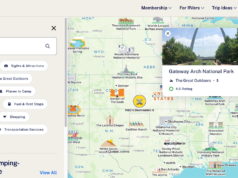Google has long held the spotlight in developing driverless technology; however, with the emergence of Otto and Elon Musk’s announcement of a Tesla Semi, “driverless trucks” are coming to the forefront of the autonomous vehicle conversation.
One major reason the trucking industry is so interested in driverless technology is a chronic shortage of truck drivers, which is threatening to get worse as the Baby Boom generation hits retirement age.
But despite the increased spotlight on autonomous trucks, the reality is that trucking technology still has a long way to go before we see trucks on the road without drivers.
In the meantime, many new technology advances are already helping with the driver shortage by expanding the impact of today’s drivers — while also making trucks and highways safer.
These advanced technology systems, collectively referred to as “Advanced Driver Assistance Systems” (ADAS), begin with simple convenience tools, like power steering, cruise control and automated gear changing. These tools are so common in passenger cars that most of us take them for granted, but they are crucial stepping stones toward higher degrees of vehicle autonomy.
Tools like traction control and anti-lock braking systems (ABS) go beyond mere convenience, and are especially helpful for truck drivers. They act as skill compensators, making it easier and safer for drivers to address challenging road conditions.
The same goes for advances in electronic stability control (ESC) — the computerized technology improves a vehicle’s stability by actively assessing road conditions to adjust vehicle handling in order to reduce potential skidding and roll overs. Radar and digital-camera technologies further elevate ADAS by compensating for drivers’ blind spots and detecting lane departures.
Ultimately, the goal is to convert most accidents into near-misses — or better.
Even more impressive is what happens when these tools work together. The combined technology is capable of detecting objects in the truck’s path, alerting the driver, then automatically braking the vehicle — if necessary — in advance of a potential collision. Adaptive cruise control also uses laser- and radar-based systems to help trucks maintain a safe distance from the vehicle ahead.
In the trucking business, beyond the obvious importance of assisting the driver in safer vehicle operation, risk mitigation is also a powerful motivator. Because trucks and the cargo they carry are significantly bigger than passenger vehicles, truck accidents can carry major price tags. By reducing the kinetic energy of an accident, such systems can mitigate both personal injury and property damage. Ultimately, the goal is to convert most accidents into near-misses — or better.
In addition to an end goal of autonomy, risk avoidance is a powerful incentive for trucking companies to adopt such technologies. Combining these tools enables vehicle platooning — the ability to line up trucks in a row and automatically brake and accelerate them as one. Demonstrations of this technology in Nevada, and most recently in Europe, shows how close the industry is getting to fully autonomous trucks.
This technology is continually being perfected through initiatives like Mcity, a public-private R&D partnership at the University of Michigan that is working to develop a commercially viable ecosystem of connected and automated driverless vehicles in urban and suburban environments.
Frankly, there’s never been a more exciting time to be part of the trucking industry. Innovations in vehicle-to-vehicle, vehicle-to-infrastructure and vehicle-to-anything communication will push the envelope beyond even these advances. By improving the flow of traffic, such systems can enable today’s highway infrastructure to be used more efficiently.
As a result, beyond improved productivity for drivers, we’ll also see a reduction in the number and severity of accidents, greatly improved fuel economy and significant environmental benefit. While there is still time before on-highway driverless trucks are the norm, there are still several technologies available today that augment drivers’ skills to make the road smoother and safer.
Featured Image: stellalevi/Getty Images






